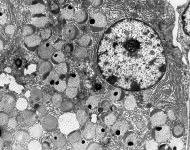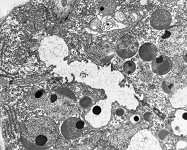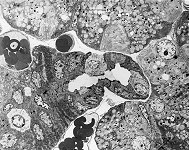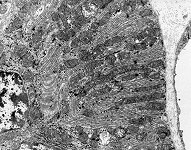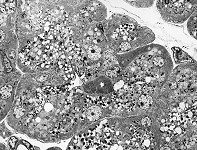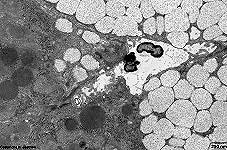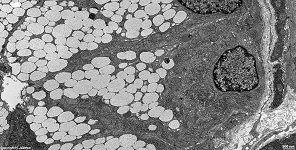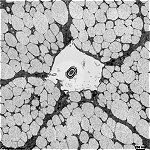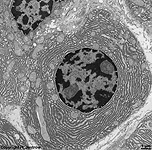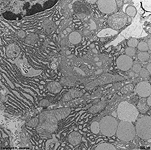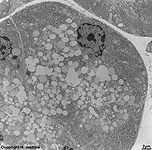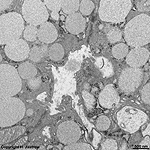| name of the group |
name of the gland |
secretion mode |
histological characteristics |
position |
duct opening |
Glandulae salivatores
majores
main salivary glands |
Gl. parotidea
parotid gland |
serous |
narrow acini, intercalated
ducts, long striated ducts,
fat cells in the stroma; one large excretory
duct |
in the retromandibular fossa |
Papilla ductus parotidei
opposite to molars 16,17 / 26,27 |
Gl. submandibularis
submandibular gland |
seromucous
(serous>mucous) |
tubulo-acinar end pieces,
v.Ebner
demilunes, myoepithelial
cells,
striated ducts, one large excretory
duct |
in the submandibular space |
Caruncula sublingualis on the
base of the frenulum linguae |
Gl. sublingualis
sublingual gland |
mucoserous
(mucous>serous) |
tubulo-acinar end pieces,
v.Ebner
demilunes, myoepithelial
cells,
short striated ducts, many excretory
ducts |
lateral posterior above
the mylohyoid muscle |
several openings on top of tips
along the sublingual plica |
Glandulae salivatores
minores
small salivary glands |
Gll. sublinguales minores
small sublingual glands |
mucoserous
(mucous>>serous) |
hardly any acini, mainly tubular
end pieces, no striated ducts,
The posterior end of this group is called the glossopalatine glands |
along the sublingual plica
on the floor of the mouth |
several openings on top of tips
along the sublingual plica |
Gll. labiales
labial glands |
seromucous
(serous>mucous) |
compound tubulo-acinar,
no striated ducts |
in the mucosa of the
upper and lower lip |
mucosa of the upper
and lower lip |
Gll. buccales
inner buccal glands |
mucoserous
(mucous>serous) |
compound tubulo-acinar,
no striated ducts |
in the mucosa of the cheek |
several openings into the
mucosa of the cheek |
Gll. molares
outer buccal glands |
mucoserous
(mucous>serous) |
compound tubulo-acinar,
no striated ducts |
outside on top of the
buccinator muscle |
several openings into the
mucosa of the cheek |
Gll. palatinae
palatine glands |
mucous |
compound tubular, no striated
ducts |
in the palatine mucosa |
several openings into the
mucosa of the palatum |
Glandulae linguales
lingual glands |
Gl.
lingualis anterior (Nuhn)
anterior lingual gland |
mucous |
compound tubular, no striated
ducts |
beneath the tip
of the tongue |
mucosa beyond the tip
of the tongue |
Gll.
linguales posteriores
posterior lingual glands |
mucous |
compound tubular, no striated
ducts |
beyond the lingual tonsil |
crypts of the lingual tonsil |
Gll.
gustatoriae
von Ebner's glands |
serous |
branched acinar glands |
mucosa beneath tongue
papillas with taste
buds |
open into the ditches
between lingual papillas |




